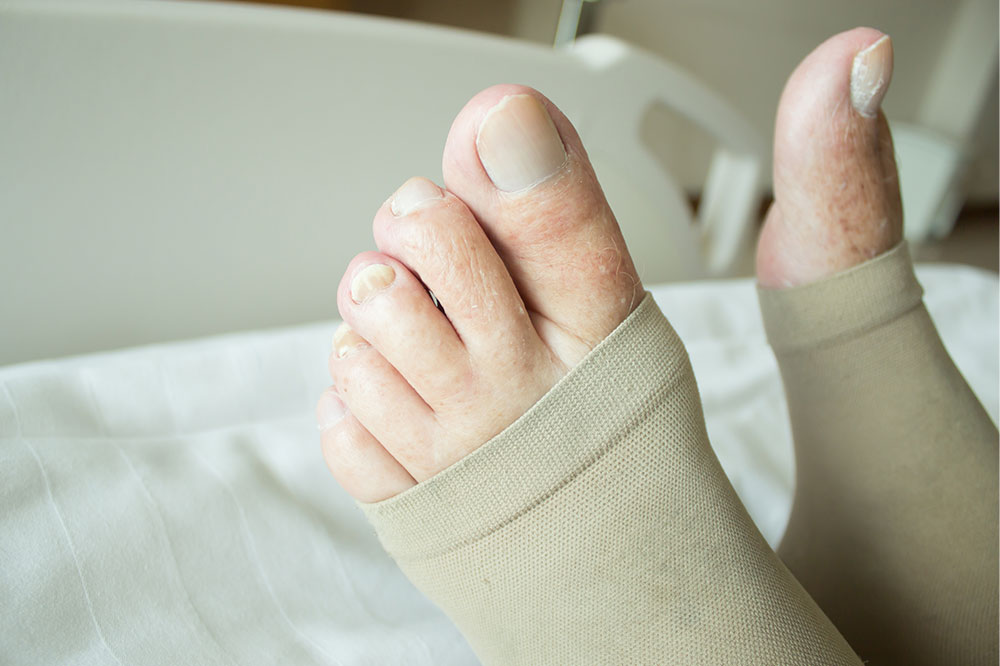
DVT Compression Stockings – How They Work, Types, and Benefits
Deep Vein Thrombosis or DVT refers to a condition where clots form in veins deep in the body. It is most common in the thigh or lower legs but also typical in the upper limbs. It is more likely in people who have had surgery, trauma, or are overweight. If left untreated, it can cause a pulmonary embolism. Treatments are not without side effects, and hence prevention is the best option.
1. Compression stockings: What are they?
Compression stockings are like tights or pantyhose made to reduce swelling and improve blood flow in the legs. Most people with DVT experience post-thrombotic syndrome, i.e., pain, swelling, and discomfort. Compression stockings alleviate all these traits and can even help prevent DVT-related symptoms.
2. How do they work?
Compression stockings, like regular stockings, are made of snug elastic fabrics. These are specially made tighter around the ankle and less tight at the calves and thighs. Clots in the leg interfere with the circulation of blood returning to the heart and make blood pool in the lower extremities, causing most of the DVT symptoms. Pressure in the legs prevents blood from accumulating and forces fluids upwards to the heart.
3. Types of compression stockings
Most local pharmacies sell basic compression stockings. Your doctor will tell you where the clot is, and depending on that, you can buy a stocking that rises only to the knee or covers most of the leg. Full-leg stockings might be more expensive, and most doctors recommend knee level stockings since they are more comfortable, easier to get on, and usually sufficient for treatment. If you can get a prescription, you can get stockings with more pressure, rather than over-the-counter stockings that apply light and consistent pressure. You can also get battery-powered compression stockings that apply varying amounts of pressure at different times. These are most effective since they almost always improve the quality of life.
4. Benefits of compression stockings
Compression stockings reduce the swelling and pain very effectively, apart from improving blood flow. They are suitable to prevent deep vein thrombosis, but it is also a treatment method. It reduces almost all symptoms. One of the significant complications of DVT is pulmonary embolism, when a clot travels to the lungs, which can seriously impair respiration and circulation. Compression stockings, however, improve circulation to the lungs and heart, reducing the possibility of such critical situations.
5. How to use compression stockings?
Typically, you only need to wear compression stockings on the leg with the clot and symptoms. Some doctors may ask you to wear it through the night, but just daytime use is more than enough in most cases. Your leg is generally less swollen in the morning, which is the best time to wear compression stockings. You might want to make sure you pull them up smoothly and guarantee they run straight up the leg. Make sure to check your legs for redness, irritation, and other skin issues, and recheck with your doctor after a few days of use.



